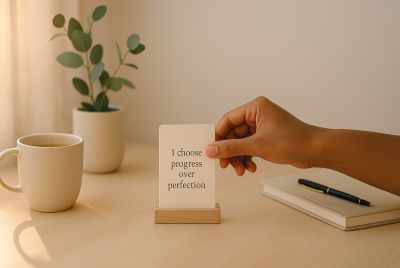Goal Setting Exercises: Simple Steps to Achieve Success
We may earn a commission for purchases made using our links. Please see our disclosure to learn more.
Setting goals sounds simple. But sticking to them? That’s where most people hit a wall. If you’ve ever set a New Year’s resolution that fizzled by February, you know the feeling. That’s why goal setting exercises can be a total game-changer for anyone wanting more clarity, motivation, and real results.
In this guide, you’ll learn why goal setting is essential, discover practical exercises to keep you moving forward, and find tools that make the whole process easier. Whether you’re aiming to get healthier, boost your career, or finally finish that passion project, these strategies can help.
Why Goal Setting Matters
It’s all too common to let the weeks slip by without much direction. But when you take the time to set meaningful goals, you create a clear path for yourself. Each day starts to feel intentional, and you’ll notice progress—even if it happens slowly. Studies have found that people who commit to specific, challenging goals are much more likely to reach them than those who set no goals at all.
Beyond simply checking tasks off a list, goal setting boosts your confidence, helps you beat procrastination, and keeps your motivation going. Even small achievements become moments worth celebrating.
The Power of Goal Setting Exercises
Why bother with exercises? Because they turn vague dreams into actionable steps. Instead of “I want to get fit,” you commit to “I’ll walk 30 minutes, five days a week.” These exercises help you break down big ambitions, track your progress, and bounce back when setbacks happen.
Plus, practicing goal setting exercises creates a habit. Over time, it becomes second nature to think in terms of goals and results—not just wishful thinking.

7 Practical Goal Setting Exercises That Work
Ready to try it for yourself? Here are some of the most effective exercises that anyone can use—whether you’re just starting or need a fresh boost.
1. The S.M.A.R.T. Goal Method
SMART stands for Specific, Measurable, Achievable, Relevant, and Time-bound. Instead of saying “I want to save money,” a SMART goal is “I will save $2,000 for an emergency fund by December 31st.” Write down each SMART component for your goal and check them off.
2. Visualization
Take five minutes each morning to picture yourself achieving your goal. Imagine every detail—what you feel, see, and hear. Visualization keeps your mind focused and increases motivation.
3. Reverse Engineering
Start with your end goal and work backward. What actions did you take to reach that stage? Write these down as mini-goals. Breaking big tasks into smaller ones makes them feel more manageable.
4. Daily Affirmations
Positive self-talk matters. Write a daily affirmation tied to your goal, such as, “I am capable of building a successful business.” Read it every morning. It reinforces belief and commitment.
5. Partner for Accountability
Discuss your objectives with a friend, relative, or coworker. Plan frequent check-ins to go over accomplishments and difficulties.
6. Goal Journaling
Every evening, jot down your wins, setbacks, and next steps. Use a dedicated goal journal or planner. Seeing your journey in writing boosts momentum and reveals patterns you might miss.
7. Weekly Review and Adjust
Set aside time each week to review your progress. Are you going as planned? What is in need of adjustment? Adjust your approach as needed—flexibility leads to long-term success.
The Science Behind Effective Goal Setting
If you’ve ever wondered why goal setting exercises work so well, the answer is backed by decades of research. Let’s take a look at what leading scientists have discovered about the psychology and brain science of setting and achieving goals.
Proven Performance Boosts from Specific Goals
Pioneering research by Dr. Edwin Locke and Dr. Gary Latham shows that setting specific, challenging goals leads to significantly higher achievement than vague intentions or simply “doing your best.” Their decades-long meta-analysis—summarized in Building a Practically Useful Theory of Goal Setting and Task Motivation (PDF)—found that people who clearly define their goals are more focused, motivated, and successful. The act of writing down what you want to achieve, and breaking it into steps, primes your mind to take action and persist through challenges.
How Your Brain Powers Goal Achievement
It’s not just psychology—goal pursuit is hardwired in the brain. According to a recent review on The Neuroscience of Goals and Behavior Change, setting a goal activates key brain areas linked to motivation, reward, and habit formation. When you visualize success or take steps toward a goal, you engage your brain’s executive functions, making it easier to plan, focus, and build new habits. This research reveals that using goal setting exercises doesn’t just feel productive—it actually changes your brain, helping you stick with new behaviors and enjoy lasting results. And if you find yourself struggling with procrastination or self-defeating patterns, learning about how to overcome self-sabotage can help you break through mental barriers and unlock your full potential.
Tips to Make Your Goals Stick
Setting goals is only the beginning. The hardest part for most individuals is sticking to them. Here’s how to boost your staying power:
- Start Small: Big changes are exciting, but starting with bite-sized goals builds confidence and momentum.
- Celebrate Wins: Reward yourself for progress, no matter how minor.
- Stay Flexible: Life happens. Adjust your goals as you go. Don’t let one failure to stop you from moving forward.
- Track Progress: Use charts, journals, or goal tracking apps. Visual proof keeps you motivated.
- Don’t Go Solo: Connect with others chasing similar goals for support and encouragement.

Recommended Tools and Products for Goal Setting
The right tools can make goal setting easier, more fun, and a whole lot more effective. Here are a few top picks from Amazon to help you stay organized and inspired:
1. Clever Fox Planner PRO
A best-selling goal planner that helps you organize your life, track progress, and build habits. Includes vision boards and weekly reviews.
2. Panda Planner Classic
Combines goal planning, productivity, and gratitude journaling. Great for daily and weekly reviews.
3. Habit Tracker Calendar
Perfect for visual learners—mark off each day you make progress. Simple, satisfying, and motivating.
4. Start Where You Are: A Journal for Self-Exploration
A guided journal with creative prompts to help you reflect, plan, and grow.
As an Amazon Associate, I earn from qualifying purchases. These recommendations are for informational purposes and are based on product reviews and popularity.
Conclusion: Start Achieving Your Goals Today
Goal setting doesn’t have to feel overwhelming or out of reach. With the right exercises, a little structure, and a few helpful tools, anyone can create real, lasting change. The journey might have a few bumps, but every step forward counts.
Start today. Choose one exercise from above, grab a planner or journal, and set your first goal. You’ll be amazed at what you can achieve when you take your dreams seriously.
Frequently Asked Questions
What are the best goal setting exercises for beginners?
The S.M.A.R.T. method and visualization are perfect starting points. They’re simple, effective, and build confidence fast.
How frequently should I evaluate my objectives?
Weekly check-ins work best for most people. Regular reviews keep you focused and let you adjust as needed.
Can goal setting exercises help with motivation?
Absolutely! Seeing progress, celebrating wins, and having an accountability partner can keep your energy high and your motivation strong.
Do I need specialized equipment or journals?
No, but they help. A simple notebook or digital app is enough for some. Others benefit from guided journals or planners.
What happens if I don’t achieve a goal?
Don’t sweat it. Adjust your approach, learn from the setback, and try again. Progress isn’t always linear—what matters is not giving up.




